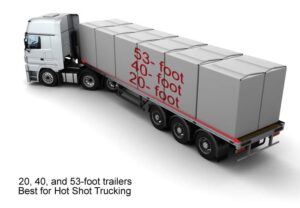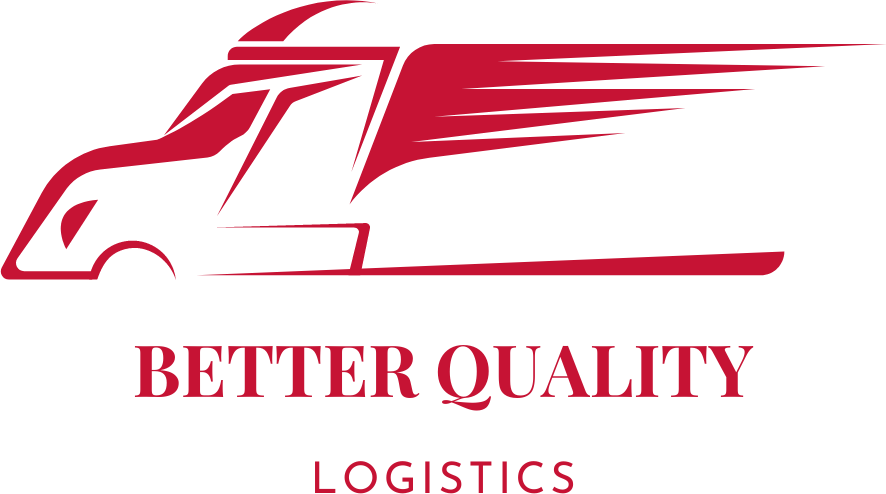A non-CDL hot shot trailer is a type of trailer that does not require a commercial driver’s license (CDL) to operate. For hot shot trucking CDL is not is not required for drivers but still there are some requirements still there which you need to fulfill.
These trailers are typically smaller and lighter than traditional semi-trailers, which makes them easier to maneuver and park. They are often used by individuals and small businesses for transporting goods that do not require a full-size truck and trailer.
Table of Contents
Non-CDL Hot Shot Trailer requirements for Hot shot trucking
When choosing a non-CDL hot shot trailer, there are several factors to consider, including:
Start from weight requirements for non-CDL hotshot trailers. The vehicle must have a weight limit of 26,000 pounds maximum or less.
This weight limit includes the weight of the trailer itself, as well as the weight of the cargo being transported. It’s important to stay within this weight limit to comply with federal and state regulations and to ensure safe transportation of goods.
Non cdl hotshot trailer requirements
First off let’s talk about what features of a trailer hauler should have to start the journey. They would be in terms size, capacity, and other dimensions like length and more.
Hot shot trailer Size and weight capacity requirements
We know hot shot trailers are come in a variety of sizes, so it’s important to choose one that can accommodate the goods you need to transport.
Non-CDL hot shot trailers typically have ample storage space for transporting goods. They may have a flatbed or enclosed cargo area, depending on the model. Depending on the hot shot service requirements you must come to know what size trailer is the best for hot shot trucking.
Another type of cargo that may require additional permits or special handling is oversized or overweight cargo.
Oversized or overweight cargo may require permits for carrying extra hot shot loads, and may also require special handling equipment or vehicles.
While non-CDL hot shot trailers are smaller than traditional semi-trailers, they still have a significant towing truck capacity. Depending on the model, they can tow up to 14,000 pounds.
Payload capacity

Make sure the trailer you choose has enough payload capacity to handle the weight of the goods you need to transport.
Non cdl hotshot trailer length requirements
The maximum length for a non-CDL hotshot trailer varies by state, with some states allowing trailers up to 40 feet in length and others limiting trailers to 30 feet or less.
Non Cdl DOT Policy Regulation or Requirements
In addition to weight limits, there are other requirements associated with operating your vehicle. The non CDL DOT requirements vary depending on the state and federal regulations, but some common requirements include:
Vehicle registration: Non-CDL hotshot trailers must be registered with the Department of Motor Vehicles (DMV) in the state where they will be operated. This registration ensures that the trailer meets the safety and emissions standards set by the state.
Insurance: Non-CDL hotshot trailer operators are required to have liability insurance that meets the minimum requirements set by the state.
Driver qualifications: Non-CDL hotshot trailer operators must have a valid driver’s license and meet other state-specific requirements for operating a commercial vehicle.
Logbooks: Non-CDL hotshot trailer operators must maintain a logbook that records the time and distance travelled to comply with federal and state regulations.
It’s important to research the specific requirements for your state to ensure that you comply with all regulations when operating a non-CDL hot shot loads.
Non- CDL hauler Safety requirements
While trailers are versatile and can transport a wide variety of goods, some types of cargo may require additional safety permits or special handling.
For example, hazardous materials (hazmat) may require special safety permits and handling procedures. Hazmat includes any substance or material that poses a risk to health, safety, or property during transportation.
If you plan to transport hazmat, it’s important to research the specific requirements and regulations for handling and transporting these materials.
Here are the examples of hazmat:
- Explosives
- Flammable liquids
- Corrosive materials
- Radioactive materials
In addition to cargo considerations, it’s important to maintain your non-CDL hotshot trailer to ensure safe and efficient operation. Regular maintenance and inspections can help prevent accidents and breakdowns, and can prolong the life of your trailer. Some maintenance tasks to consider include:
Safety maintenance
- Checking and maintaining tire pressure
- Inspecting and replacing brakes as needed
- Checking and replacing lights and reflectors
- Lubricating moving parts
- Checking and replacing belts, hoses, and other components
Safety equipment
Non-CDL hotshot trailers must be equipped with safety equipment, including brakes, lights, and reflectors, to ensure safe operation on the road.
Safety equipment is compulsory to comply with DOT regulation. Alongside of it, you can follow this article on equipment needed for hot shot trucking
Headlight Alignment
When your tow vehicle is connected to a heavy trailer, the added weight may cause the headlights to point upward. A weight distribution hitch can help prevent this from happening and ensure that the headlights are properly aligned.
Hitch type requirements
Weight distribution requirement is a must if you want to set the bar tightness neither too tight nor loose. Let’s come to know them below:
Gooseneck Hitches
- Best for heavy-duty towing
- Attaches to the bed of a pickup truck
- Superior stability and weight distribution
Bumper Hitches
- Suitable for light-duty towing
- Attaches to the bumper of the tow vehicle
- Easy to install and cost-effective
Fifth-Wheel Hitches
- Attaches to the bed of a pickup truck
- Offers great maneuverability and stability
- Ideal for towing large travel trailers and RVs
Pintle Hitches
- Commonly used for heavy-duty towing
- Consists of a pintle hook and lunette ring
- Durable and strong
Weight Distribution Hitches
- Designed to evenly distribute weight
- Prevents sagging, swaying, and handling issues
- Great for towing heavy loads
Sway Control Hitches
- Prevents trailer sway while towing
- Uses specialized mechanisms to counteract forces
- Keeps trailer stable and straight
Brake Control Systems
- Synchronizes braking of tow vehicle and trailer
- Helps prevent accidents and improves handling
- Important for towing heavy trailers.
Conclusion
Startup a hot shot business now considered is a booming industry with it’s versatile and cost-effective option for individuals and small businesses that need to transport goods quickly and efficiently.
These trailers come in a variety of sizes and types and offer several benefits, including ease of maneuverability and efficiency. When choosing a non-CDL hot shot trailer, it’s important to consider factors such as size, payload capacity, and storage space to ensure that you choose the right trailer for your needs.
